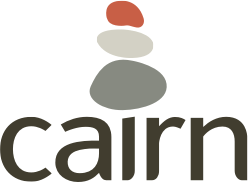data-animation-override>
“Using a smart device, list 3 valid, reliable and appropriate local/regional resources that could provide support to you or someone you know that is having a hard time dealing with stress in their life. List the name and/or organization, location and how to best contact them. Also explain how you know this resource is valid, reliable and appropriate for you or someone your age if addressing stress.
-You will be assessed using the attached accessing information scoring guide.”
A few weeks ago, I worked with a large school district on the east coast. They loved my activities on the health education, my pitch on the Whole School, Whole Community, Whole Child model and how as health teachers they play a role in a bigger health system. They loved my effective practices in health education activity and the energizers I was incorporating in. I had them enthused! Motivated!
Until we went on to discuss assessment in the health education classroom. I went into my pitch about how less is more. How depth not breadth is what we need to focus on. If you have 6 weeks to teach middle school health education, don’t teach the students 6 units! Teach 2-3 content areas, but in depth. It’s the skills that are important. National Health Education Standards 2-8. So, select 2-3 units (based on what is being taught in other grades, YRBS data and a larger K-12 scope and sequence). Within those 2-3 units, select which skills (NHES 2-8) may fit nicely into each of them, always including Standard 1, concepts with a focus on functional knowledge. For example, a unit on Promotion of Healthy Eating may fit nicely with analyzing influences. Violence Prevention may fit with interpersonal communication. Promotion of Sexual Health may fit with accessing information. So, develop performance assessments for those units (using your local/state YRBS data and the HBOs and Performance Indicators in the HECAT). I even shared an example of what a High School plan may look like. I selected 5 units (not 9!) and paired them with which skills I’d assess. Knowing that I may teach more skills within that unit or informally assess skill development, but, which would I assess formally?
I then came up with simple prompts (used as examples, not fully detailed out) that go with each of the units. The participants in my training LOVED them! They took photos of the slides and wrote down notes.
data-animation-override>
“You are concerned about the amount of energy and sports drinks you consume on a daily basis. Using the goal setting template attached below, work through writing a goal statement and the steps for achieving your goal.
-You will be assessed using the attached goal setting rubric.”
Until one person raised their hand and said, “This is all well and good. However, we are held accountable for a pre and post- test in 6th, 7th, 8th and high school. Those pre and post tests cover only Standard 1/Content and every unit in health education (9 units).”
WOW. That system is broken. That system isn’t sending educators a best practice message. The assessment system isn’t caught up with a skills-based approach to health education. The assessment is actually harming kids. With so little time to teach a skills-based curriculum, the focus on content, and a lot of times not functional content (content that actually leads to healthy behavior outcomes), is robbing students of their health literacy. There is nothing stopping individual teachers from teaching a skills-based approach, however, they want to keep their jobs. And, if they are held accountable for content only, they’ll teach to the health education practices we used 30 years ago.

Leave a Reply